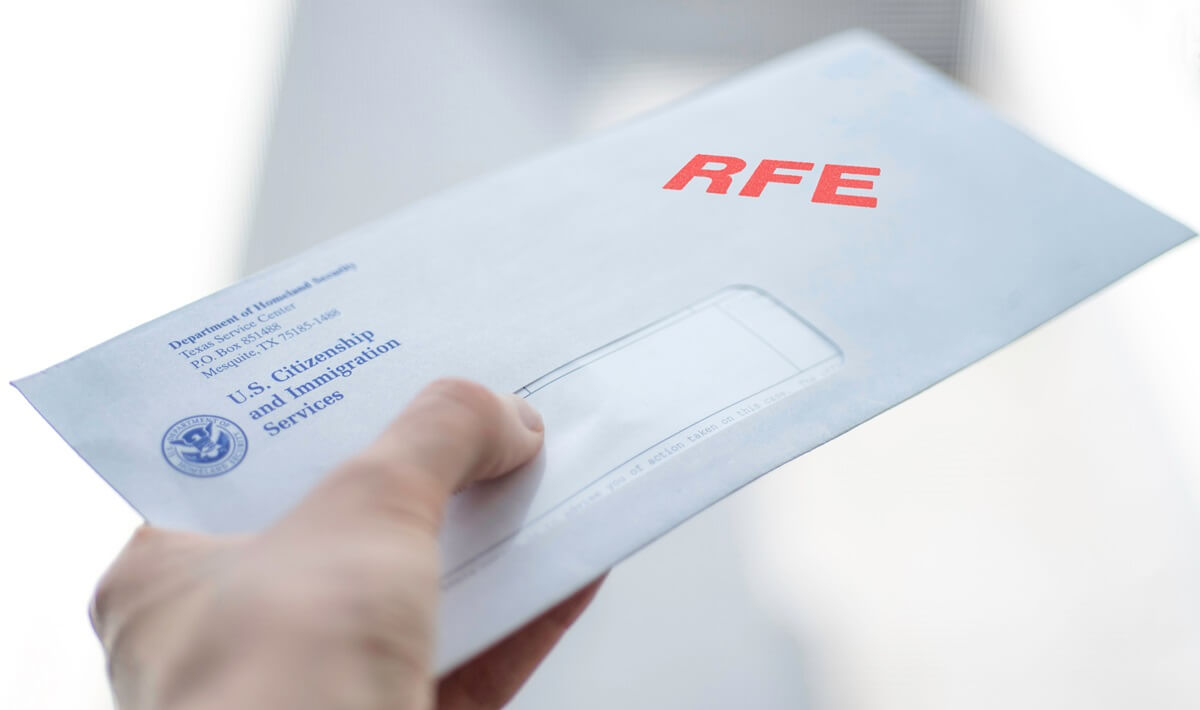
Adjustment of status through marriage allows a foreign spouse already in the United States to apply for a green card without leaving the country.
If you're married to a U.S. citizen or a lawful permanent resident (green card holder) and you're already in the U.S., this process can be a straightforward path to lawful permanent residency — without having to travel abroad for consular processing. However, it’s important to follow each step carefully and ensure you qualify.
Step 1: Confirm Eligibility for Adjustment of Status through Marriage
Step 2: File an Adjustment of Status Package Based on Marriage
Step 3: Receive Receipt Notices
Step 4: Attend a Biometrics Appointment
Step 5: Respond to Any RFEs (If Applicable)
Step 6: Receive Work and Travel Authorization
Step 7: Attend the Interview for Adjustment of Status through Marriage
Step 8: Receive the Green Card
Frequently Asked Questions (FAQs)
Get Help with Adjustment of Status through Marriage
In this guide, we'll walk you through each stage of the marriage-based adjustment of status process so you know exactly what to expect.
Confirm Eligibility for Adjustment of Status through Marriage
To adjust status, the beneficiary spouse must be in the U.S. and meet eligibility requirements. Specifically, to qualify for adjustment of status through marriage, you must:
- Be legally married to a U.S. citizen or lawful permanent resident;
- Have entered the U.S. lawfully (e.g. valid visa, parole or Visa Waiver Program);
- Be physically present in the U.S. at the time of filing;
- Have an immigrant visa immediately available to you; and
- Be admissible to the U.S. under immigration law.
Visa Availability
The concept of visa availability can be difficult for many to understand. For the spouse of U.S. citizen, an immigrant visa is always immediately available. You don’t have to wait. You can file Form I-485 at the same time as Form I-130, or anytime after. If you're married to a permanent resident, you must check the visa bulletin to make sure your category (F2A) is “current.” That means there’s no backlog and a visa is available right now. If the F2A category is not current, you have to wait until it is before filing Form I-485. For this reason, it is not always possible for spouses of permanent residents to adjust status through marriage.
Must Be a Valid Marriage
Additionally, you must also prove that your marriage is legally valid and bona fide. This means your marriage must be legally recognized in the country where it occurred, and you must show it wasn’t entered into solely for immigration benefits.
File an Adjustment of Status Package Based on Marriage
The foreign national beneficiary will need to submit several government forms and supporting documents to U.S. Citizenship and Immigration Services (USCIS). If your spouse is a U.S. citizen, you can typically file all forms together in a "one-step" package. Generally, you'll need to submit:
- I-130, Petition for Alien Relative
- I-130A, Supplemental Information for Spouse Beneficiary
- I-485, Application to Register Permanent Residence
- I-864, Affidavit of Support
- I-765, Application for Employment Authorization (optional)
- I-131, Application for Travel Document (optional)
- I-693, Report of Medical Examination
In addition, you'll need to submit supporting documents with each form. Failure to submit a complete or well-documented application package will likely result in a Request for Evidence or possible denial. Refer to USCIS instructions or use a service like CitizenPath to prepare your forms and get a checklist of supporting documents tailored to your situation.
Of course, cost is another important consideration. Cost will vary based on the forms filed and who prepares them. See a breakdown of the typical forms and fees for adjustment of status.
Receive Receipt Notices
If you have successfully filed an application to adjust status through marriage, USCIS will respond with a receipt notice (Form I-797C Notice of Action) for each application or petition. The I-485 receipt notice is important for several reasons:
- Confirms that USCIS has accepted your application for processing;
- Provides a receipt number that you can use to track the status of your case; and
- Is documentary proof that you are lawfully present with a pending I-485 (in case your status is expiring).
The alternative is that USCIS rejects the application package. They may reject the entire package or certain forms if they find it to be incomplete or lacking essential evidence. In this case, USCIS will issue a rejection notice, also on a similar Form I-797C.
Attend a Biometrics Appointment
Next, USCIS will schedule the beneficiary for a biometrics appointment to collect fingerprints, photo, and signature. They will schedule this appointment at a local USCIS Application Support Center (ASC), typically within 4–6 weeks of filing. It’s a quick and routine appointment. There is no interview.
Respond to Any RFEs (If Applicable)
USCIS may issue a Request for Evidence (RFE) if they need more information to process the case. But your goal should be to avoid RFEs because they can signficantly delay case processing. Common RFEs include:
- Missing or unacceptable documents (e.g. birth certificates)
- Insufficient evidence of a bona fide marriage
- Inadequate financial information for the Affidavit of Support
You must respond by the deadline stated in the letter to avoid a denial. CitizenPath helps you avoid RFEs with built-in error checking when preparing your forms. Our checklist of supporting documents is customized to your situation, helping you to get everything submitted properly.
Receive Work and Travel Authorization (Optional)
If you applied for employment authorization (Form I-765) and an advance parole travel document (Form I-131), these documents should arrive next. At this time, USCIS is issuing the employment authorization document (EAD) within 2-3 months, but advance parole is taking much longer. These benefits are optional applications but are necessary if you want to:
- Work legally in the U.S. before receiving a green card
- Leave the U.S. at any point before a green card is issued
Working without an EAD or traveling outside the U.S. without advance parole could potentially result in a denied adjustment of status through marriage.
Attend the Interview for Adjustment of Status through Marriage
USCIS will schedule the green card interview at a field office nearest the physical address listed on your application. Both spouses must attend the interview. At the interview, a USCIS officer will:
- Review your applications
- Ask questions about your relationship and living arrangements
- Verify your eligibility and documents
The USCIS officer's goal is to confirm the marriage is genuine and that the applicant qualifies for a green card. CitizenPath recommends that you attend the interview with a copy of your entire application package and take originals of civil documents in case they need to be verified.
You and your spouse can get ready for the green card interview and preview some of the potential interview questions for spouses.
Receive the Green Card
Finally, if the interview goes well and there are no issues, you will receive your green card in the mail. As a green card holder, you can:
- Work legally in the U.S.
- Apply for a Social Security number (if not already obtained)
- Travel in and out of the U.S. (with some restrictions)
- Eventually apply for U.S. citizenship (after three years if still married to a U.S. citizen)
For marriages under two years old, USCIS issues a conditional green card, valid for two years. You must later file Form I-751 to remove conditions. If your marriage is over two years old at the time of approval, your spouse gets a 10-year permanent resident card.
Frequently Asked Questions (FAQs)
Smart Software to Make It Easy
Human Support When It Matters
Navigating the process to adjust status through marriage can be challenging, but you don’t have to do it alone.
CitizenPath provides affordable, step-by-step help to prepare your Adjustment of Status Package (Forms I-485, I-130 and I-130A), Affidavit of Support Package (Form I-864), and all other forms related to your adjustment of status through marriage. Immigration attorneys designed our service to help you avoid costly mistakes, rejections and denials without the high cost of an attorney.
Sign up for our free newsletter for regular tips and other important immigration considerations.
Want more immigration tips and how-to information for your family?
Sign up for CitizenPath’s FREE immigration newsletter and
SAVE 10%
on our immigration services











